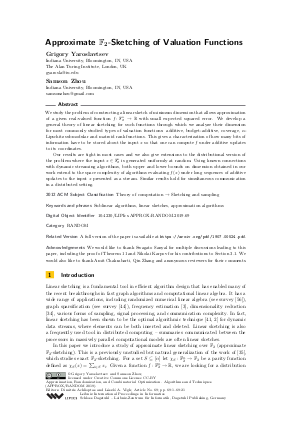LIPIcs.APPROX-RANDOM.2019.69.pdf
- Filesize: 0.61 MB
- 21 pages

 Creative Commons Attribution 3.0 Unported license
Creative Commons Attribution 3.0 Unported license






















































Feedback for Dagstuhl Publishing